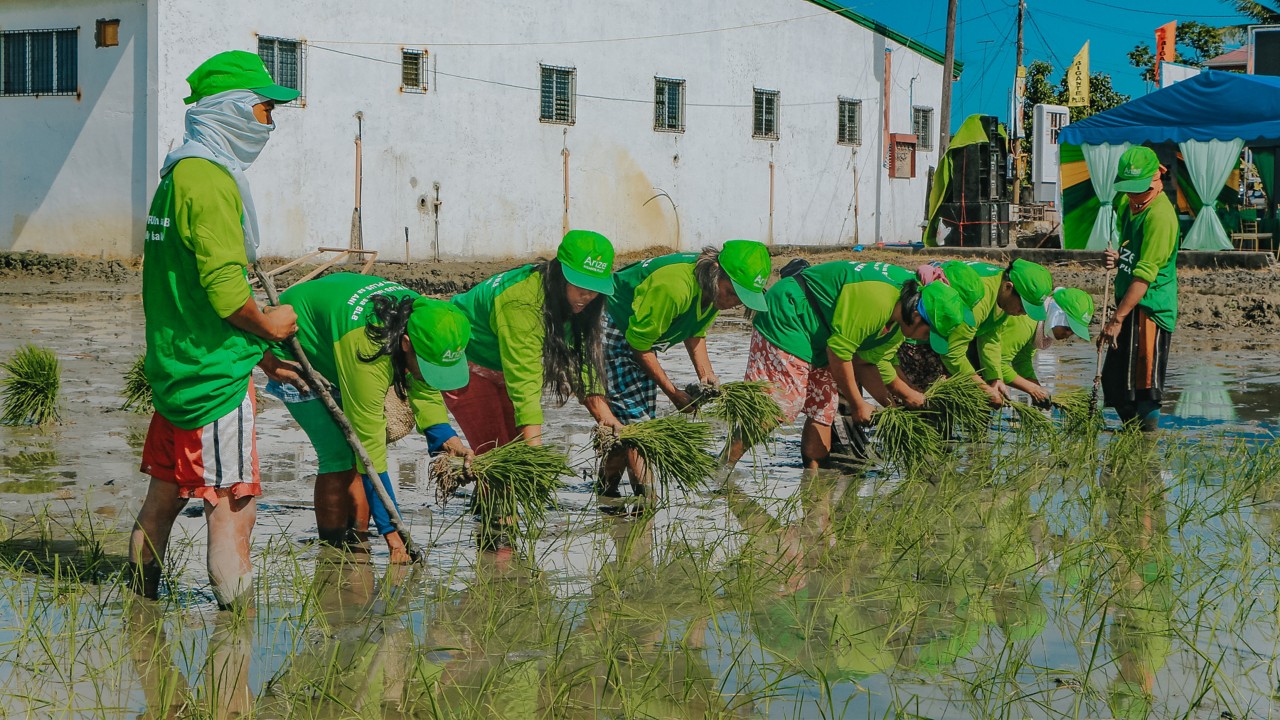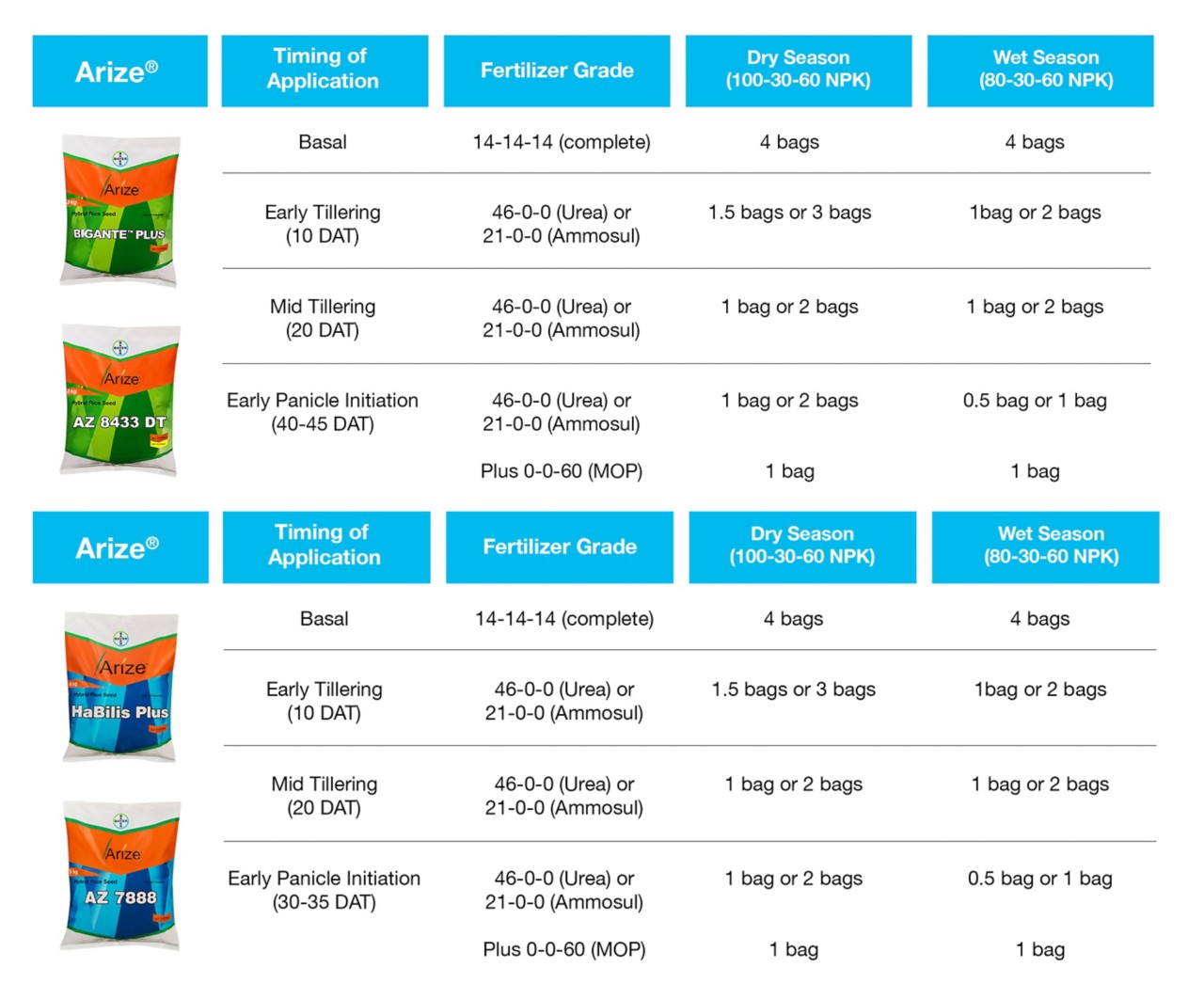Problema sa taniman?
Mag-text sa Bayer TXT Connect: 225656727 (Smart/ TNT/ Sun Subscribers) o 21586727 (Globe/ TM Subscribers)
Global population and global demand for rice are both on the rise. We need solutions that produce more rice to nourish large populations. Food security around the world will benefit from an adaptive solution that keeps creating better lives and better livelihoods. We require new innovations that can sustainably boost rice yields, feed farmers’ families, create prosperity for the community, and secure self-sufficiency for countries.

Bayer CropScience is the global leader in developing rice hybrids which are adapted to various agro-climatic conditions. Our breeders strive to develop hybrids with increased yield that can fit our customers’ needs, whether in Asia or in the Americas. We use conventional breeding as well as molecular breeding to discover new traits against biotic and abiotic stresses and incorporate these traits into superior agronomic germplasm via backcrossing and forward breeding. Each year new hybrids are extensively tested in several countries, and only the best are selected for commercial use.
As a leader, Bayer CropScience has also established a high-performing supply chain. We have developed real expertise in producing hybrid seeds, a complex process that requires considerable time and labor. We have successfully established seed production operations in India, The Philippines, Bangladesh, and Brazil, and are continuously expanding these operations to meet the demands of the market. We have also invested heavily in new processing and storage capabilities, to ensure that our Arize® Hybrid seeds reach rice growers with the highest standards in terms of purity levels and germination rates.

“Arize increases our harvest. It helps to support our financial needs, especially for the education of our children and our daily expenses.”

Seedling Rate
• 15 kilograms per hectare= 5 packs of Arize ® hybrid seeds (3 kg)
• Good for 300 to 400 m2 Seedbed (wet bed)
• (1 pack x 3 kg): 60-80 m2 x 1 m
Soaking
• Soak the seeds 18 to 24 hours in clean water; change every 6 hours if not soaked in flowing water; do not discard floating or half-filled seeds; ensure seeds have imbibed enough water; drain after soaking.
Incubation
• Incubate seeds 24 to 48 hours until root emerges; keep seeds moist and aerated; cover with any material to facilitate incubation; to avoid heat build-up, do not pile sacks on top of each other; gradually turn seeds upside down.
Seedbed Selection Tips
• Near irrigation/ water source.
• Away from lamp posts.
• Protected from pests like snails, birds and rats.
• Not shaded; with enough sunlight.
Seedbed Preparation
• Prepare wet bed seedbeds (300-400 m2 for 15 kg seeds) a day before sowing.
• Construct 5-10 cm raised seedbed with approximately 1 meter width.
• Construct drainage channels (40 cm) between seedbeds to drain excess water to attain vigorous seedlings.
• Optional: Incorporate compost or carbonized rice hull (CRH) (3 bags). Spread evenly and mix on the upper/ top layer of the seedbed before layering.
Sowing
• Sow the seeds when the root emerges (white dots or swollen embryo reserved).
• Sow uniformly at 3 kg seeds per 60-80 m2
Care of Seedlings
• Keep the seedbed saturated within 5-7 days after sowing.
• Gradually increase water level to 1-2 cm.
• Apply 15 kg complete fertilizer at basal, 3 kg 21-0-0 at 7 DAS and 3 kg 21-0-0 at 14 DAS if deficiency symptoms are observed.
Transplanting
• Transplanting when seedlings are 3-5 leaf stage (21-23 DAS for AZ 8433 DT).
• Transplant in straight rows at 20 x 20 cm distance.
• Use 1 to 2 seedlings per hill.
• Note: Ensure that the field was thoroughly prepared and leveled before transplanting.
Fertilization

Irrigation
• Implement the usual irrigation practice.
• Water the field 2-3 cm 2 days after transplanting.
• Increase water depth to 5-10 cm during vegetative stage.
• Drain the field 2-3 weeks before harvest or 94 to 101 DAS.
Harvesting
• Harvest the rice paddy when panicles are about 95% golden yellow in color.
Drying
• Dry the wet paddy preferably within 24 hours or at least aerated.
• Slow-dry harvested paddy.
• Arize® hybrids should have 12-14% moisture content before milling.